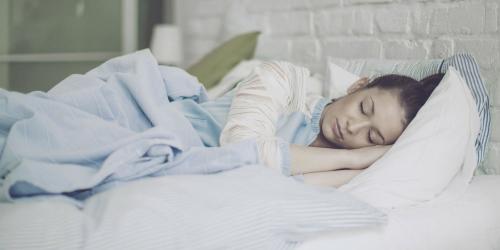In collective imagery, the sleepwalker is a person who moves by sleeping with arms outstretched and eyes wide open. But the reality is more diverse: if some people wander at night looking haggard, up to go out on the street or climb on the roofs, many sleepwalkers simply straighten up in their bed, go sit on the couch from the living room and speak aloud with an imaginary person.
This sleep disorder, which doctors classify as parasomnias , is quite common in childhood: 20% of children under 15 years old have episodes of sleepwalking. But it usually fades in adolescence . Only 2% of adults are affected.
A phenomenon of dissociation of the brain
Contrary to what we have long thought, sleepwalking is not related to the dream because "it occurs during slow sleep, often at the beginning of the night, and not during REM sleep," says Mounir Chennaoui, Head of the Fatigue and Vigilance Unit at the Biomedical Research Institute of Armed Forces (IRBA) and co-author of "Sleep Well for Dummies" (First Edition).
Records of brain activity have shown a dissociation of the activity of different areas of the brain during sleepwalking episodes. The areas that govern consciousness are dormant while the motor areas are awake. The cerebral circuits of the pain seem inactive as the sleepwalker can be seriously injured without feeling pain or remembering the night-time events of the night.
A hereditary factor
There is a genetic predisposition to sleepwalking, which is why this disorder is more common in some families.
But a lack of sleep, an excess of alcohol, a high stress or an anxiety are triggers. Given their sleep dissociated sleepwalkers often feel very tired and drowsy during the day.
A French study, carried out in 2015 at Montpellier University Hospital, has also shown the existence of a paradox: while 80% of sleepwalkers are insensitive to pain at night, they are more likely to suffer from migraines and headaches during the day. .
"Never wake a sleepwalker"
This is the prime advice of Mounir Chennaoui. "He could be in a state of mental confusion and aggression. The best is to walk him calmly in his bed, without rushing him. "
Sleepwalking is not serious in itself. But it is better to secure your home to limit the risk of nighttime accidents: curling the entrance door double turn, block windows, remove obstacles, etc ...
When to consult
And if the episodes are repeated, are likely to present a danger - for oneself or for the entourage - or generate too much fatigue, it is better to talk to your doctor. He will send you to a specialized center that will carry out a battery of tests to establish an accurate diagnosis.
The dissociation of sleep can indeed be related to a particular form of epilepsy, a respiratory disorder or to the taking of certain drugs which it will be necessary to evict.
Cases of mild moderate somnambulism may be treated by hypnosis . Five sessions on average are enough. And for more serious cases, treatment with anxiolytics is often administered to curb the nocturnal semi-awakenings responsible for disorders.




